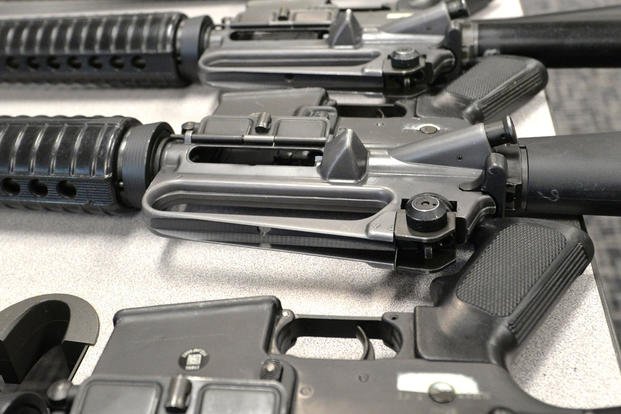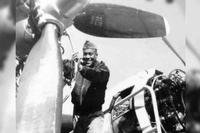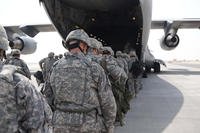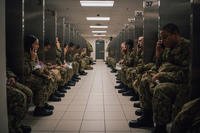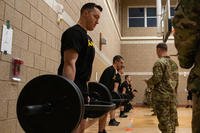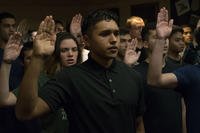In order to graduate from Air Force basic training, you must complete (and qualify on) the Air Force rifle (M-16) qualification course.
Technical Stuff: The Air Force used to also require qualification on the M-9 pistol during basic training, but this requirement was recently eliminated.
During the actual firing, you'll fire a total of 80 rounds at a man-sized target (upper body only) at ranges from 75 meters to 300 meters (1 meter = 1.094 yards). The range at Lackland [Air Force Base, San Antonio] is a short range, so you'll actually be firing from only 25 yards away. However, the target sizes are shrunk to represent the proper sizes at the specified distances (75 meters, 175 meters and 300 meters).
The Air Force conducts its basic training weapons qualification course in three phases.
Tip: Airmen who hit the target at least 35 times qualify for the Small Arms Expert Ribbon.
Phase 1: Battle Sight Grouping and Zero
During this phase, you're sighting in the rifle. After each shot group, you (and the instructor) examine the target. The instructor then gives you advice (such as how to breathe properly or not jerk the trigger) to correct anything that you're doing wrong. Additionally, the instructor tells you how to adjust your sights to correct your grouping.
All the shots in Phase 1 are in the prone, supported position, where you're lying on your stomach on the ground, at a slight angle to the target, with your rifle supported on top of a sandbag. The targets for this phase are all man-sized targets at 75 meters.
The following list shows the shot groups for phase 1 training, which includes 16 rounds total. After each group, you're to check your target and make sight adjustments:
- Four rounds (one magazine with 4 rounds loaded) at 75 meters.
- Three rounds (one magazine with 3 rounds loaded) at 75 meters.
- Three rounds (one magazine with 3 rounds loaded) at 75 meters.
- Three rounds (one magazine with 3 rounds loaded) at 75 meters.
- Three rounds (one magazine with 3 rounds loaded) at 75 meters.
Phase 2: Practice
During the practice phase, you fire a total of 24 rounds from 4 different positions. A couple of twists are thrown in here. First of all, each round is timed, and you'll have to reload a fresh magazine during the round. Keep your head and don't rush, because you have time to make your shots count and still change the magazine and shoot again, within the prescribed time limit. During the practice round, you fire at a man-sized target at 175 meters.
The following describes the three supported positions you'll use during phase 2:
- Prone supported: Six rounds (two magazines with 3 rounds loaded in each) at 175 meters, 50-second time limit.
- Kneeling supported: Six rounds (two magazines with 3 rounds loaded in each) at 175 meters, 50-second time limit.
- Over barricade supported: Six rounds (two magazines with 3 rounds loaded in each) at 175 meters, 50-second time limit.
Phase 3: Qualification
Phase 3 is the phase that really counts. You fire a total of 40 rounds at a man-sized target at 300 meters. To pass the qualification course, you must hit the target at least 20 times. The following list describes the specific ways you must qualify using supported and unsupported positions:
- Prone supported: Ten rounds (one 4-round magazine, two 3-round magazines) at 300 meters, 90-second time limit.
- Prone unsupported: Ten rounds (one 4-round magazine, two 3-round magazines) at 300 meters, 90-second time limit.
- Kneeling supported: Ten rounds (one 4-round magazine, two 3-round magazines) at 300 meters, 90-second time limit.
- Over barricade supported: Ten rounds (one 4-round magazine, two 3-round magazines) at 300 meters, 90-second time limit.
From Basic Training for Dummies, copyright © 2011 by Wiley Publishing, Inc., Hoboken, New Jersey. Used by arrangement with John Wiley & Sons, Inc.
Interested in Joining the Military?
We can put you in touch with recruiters from the different military branches. Learn about the benefits of serving your country, paying for school, military career paths and more: sign up now and hear from a recruiter near you.
